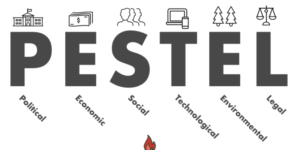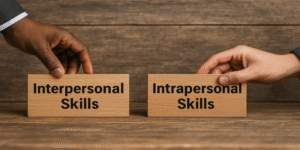In academic contexts, students are often encouraged to read widely, write critically, and engage in independent research. However, listening remains one of the most fundamental yet underestimated skills for effective learning. As highlighted in Learning by Listening (n.d.), “people do not instinctively listen well” and must consciously develop this ability. The distinction between hearing and listening is critical: while hearing is the physiological act of perceiving sound, listening requires active attention, interpretation, and understanding (Listening Techniques & Skills, n.d.).
This article explores the importance of improving listening techniques and skills in higher education, the process of listening, the obstacles that hinder it, strategies for improving listening skills, different types of listening, and the implications for academic and professional success.
Listening vs Hearing
A key starting point is distinguishing hearing from listening. Hearing is the passive reception of sound, whereas listening is the active process of making sense of what is heard (Listening Techniques & Skills, n.d.). As Brownell (2012) argues, listening involves focusing, interpreting, and responding, making it a more complex cognitive process than hearing alone.
For example, a student may sit in a lecture hall and physically hear the lecturer’s voice. However, unless they consciously attend to the content, take notes, and connect it with prior knowledge, they are not truly listening. This distinction is crucial because effective listening leads to learning, whereas hearing without engagement often results in limited comprehension and poor academic outcomes.
The Process of Listening
Listening is not a single act but a multi-stage process. According to Listening Techniques & Skills (n.d.), it involves:
- Receiving – capturing auditory signals and ensuring minimal physical barriers, such as noise or poor acoustics.
- Understanding – making sense of the speaker’s message through cognitive processing and comprehension.
- Evaluating – critically analysing and judging the message for accuracy, relevance, and meaning.
- Responding – providing verbal or non-verbal feedback, which confirms understanding and encourages further communication.
- Remembering – retaining information for later use in academic discussions, assignments, or exams.
This model resonates with Rost’s (2011) definition of listening as a complex process of interpretation requiring both cognitive and affective engagement.
Obstacles to Effective Listening
Despite its importance, effective listening is often disrupted by several barriers. The Listening Techniques & Skills (n.d.) presentation identifies five common obstacles:
- Physical distractions such as noise, poor lighting, or uncomfortable environments that reduce focus.
- Physiological distractions including fatigue, illness, or hunger, which can impair concentration.
- Psychological distractions, such as stress, anxiety, or prejudices, that interfere with comprehension (Mendelsohn, 1998).
- Factual distractions, where listeners focus excessively on minor details rather than grasping the main ideas.
- Semantic distractions, arising when unfamiliar jargon or ambiguous language creates confusion.
For instance, in a medical lecture filled with complex terminology, international students may struggle with semantic noise, leading to misunderstandings unless they prepare by pre-reading or clarifying terms (Flowerdew & Miller, 2005). Similarly, a noisy classroom environment can cause students to miss essential information, underlining the importance of controlling external distractions.
Promoting Better Listening
Improving listening requires deliberate effort and self-awareness. The Learning by Listening (n.d.) text and the Listening Techniques & Skills (n.d.) slides provide a range of strategies that align with research in communication studies:
- Motivation to listen – Students should identify the relevance of what they are hearing to maintain attention (Wolvin & Coakley, 2000).
- Responsibility for learning – Effective listening requires acknowledging that comprehension is not solely the speaker’s duty, but also the listener’s active role (Julia, 2010).
- Environmental control – Choosing a quiet location and maintaining visual focus on the speaker minimises distraction.
- Active engagement – Rather than dismissing unfamiliar or challenging ideas, students should practise open-minded listening (Rost, 2011).
- Note-taking – Writing down keywords, symbols, and summaries strengthens memory and aids later revision (Pauk & Owens, 2010).
- Critical listening – Evaluating both the content and the delivery of a message fosters deeper learning and critical thinking.
For example, business students attending a guest lecture might enhance understanding by preparing beforehand, identifying key themes, and asking probing questions to clarify uncertainties.
Types of Listening
Listening is not a uniform process. Different contexts demand different types of listening, each requiring specific skills. The Listening Techniques & Skills (n.d.) resource identifies four main forms:
- Appreciative listening – focusing on enjoyment, such as listening to music or a story.
- Empathic listening – understanding the speaker’s feelings and perspective, essential in counselling or healthcare.
- Discriminative listening – recognising subtle differences in tone, accent, or emotion (important in language learning).
- Analytical listening – evaluating arguments and evidence critically, particularly useful in academic lectures and debates.
These categories overlap with Brownell’s (2012) model of listening as a process that is both cognitive and affective, requiring focus on meaning as well as emotional nuance.
The “Ten Commandments” of Effective Listening
The Listening Techniques & Skills (n.d.) presentation also introduces the Ten Commandments of Effective Listening, which provide practical advice for students:
- Stop talking – true listening is impossible while speaking.
- Put the speaker at ease – show interest and avoid distractions.
- Pay attention to non-verbal cues such as tone, posture, and facial expressions. Research indicates that 93% of communication is non-verbal when tone and body language are considered (Mehrabian, 1972).
- Listen for what is not said – silence and hesitation often convey meaning.
- Seek shared meaning – paraphrase or reflect back to confirm understanding.
- Avoid trigger words that may cause mental resistance or emotional distraction.
- Focus on emotions – understand not just the words but also the feelings behind them.
- Be patient – allow the speaker time to finish.
- Control emotions – avoid defensiveness or premature judgement.
- Empathise – place yourself in the speaker’s position to build trust and understanding.
These principles highlight that listening is an intentional, disciplined process rather than a passive act.
Listening and Academic Success
The link between listening competence and academic achievement is well established. According to Listening Techniques & Skills (n.d.), individuals spend up to 50% of their workday communicating, and nearly half of that time is spent listening. Effective listeners are often perceived as more intelligent, efficient, and capable (Nichols & Stevens, 2008).
A practical example can be drawn from engineering students attending technical lectures. Those who adopt active listening strategies—such as anticipating key points, filtering out distractions, and summarising ideas—tend to perform better in assessments (Hunsaker & Alessandra, 2008). Similarly, medical students who practise empathic listening not only improve their academic performance but also strengthen their ability to build trust with patients (Brownell, 2012).
Listening also contributes to the development of critical thinking, as students must evaluate arguments, identify biases, and integrate new information with existing knowledge (Rost, 2011). In group projects, effective interactive listening promotes collaboration, reduces conflict, and fosters collective problem-solving (Thompson et al., 2019).
The Role of Technology in Modern Listening
The digital age has transformed listening practices. Online lectures, podcasts, and video conferencing platforms such as Zoom and Microsoft Teams have become essential tools in both distance learning and blended education. According to Evans (2008), lecture capture technologies enable students to review complex material, thereby reinforcing comprehension.
Moreover, AI-driven tools such as automated transcription services (e.g., Otter.ai, Microsoft Copilot) provide written records of lectures, helping students with hearing impairments or those who prefer to revisit content (Firth, 2019). However, scholars caution that overreliance on technology may reduce active engagement, leading students to postpone listening and miss the interactive benefits of live participation (Rienties & Toetenel, 2016).
Effective listening is a cornerstone of learning, particularly within higher education where lectures, discussions, and collaborative tasks form the backbone of knowledge acquisition. As emphasised in both Learning by Listening (n.d.) and Listening Techniques & Skills (n.d.), students must recognise that listening is a skill to be practised, not an automatic process. By addressing barriers such as distractions, prejudice, and cognitive overload, and by applying active listening strategies—including note-taking, focusing on main ideas, and empathising with speakers—students can significantly improve their academic performance.
In an increasingly globalised and technologically mediated learning environment, the ability to listen attentively and critically is more important than ever. Employers also value listening as a key professional competence (Cottrell, 2019). Ultimately, to learn by listening is not simply to hear words, but to engage with ideas, emotions, and perspectives in a way that fosters understanding, reflection, and intellectual growth.
References
Brownell, J. (2012). Listening: Attitudes, Principles, and Skills. 5th ed. Boston: Pearson.
Cottrell, S. (2019). The Study Skills Handbook. 5th ed. London: Macmillan Education.
Evans, C. (2008). The effectiveness of m-learning in the form of podcast revision lectures in higher education. Computers & Education, 50(2), pp.491–498.
Field, J. (2008). Listening in the Language Classroom. Cambridge: Cambridge University Press.
Firth, J. (2019). The impact of note-taking technologies on student learning. Journal of Educational Technology, 36(2), pp.77–89.
Flowerdew, J. and Miller, L. (2005). Second Language Listening: Theory and Practice. Cambridge: Cambridge University Press.
Julia, T.W. (2010). Interpersonal Communication: Everyday Encounters. 6th ed. Wadsworth.
Learning by Listening. (n.d.). Study Skills Resource.
Listening Techniques & Skills (n.d.). PowerPoint Presentation.
Mendelsohn, D. (1998). Teaching listening. Annual Review of Applied Linguistics, 18, pp.81–101.
Nichols, R.G. and Stevens, A. (2008). Are You Listening? 11th ed. New York: McGraw-Hill.
Rost, M. (2011). Teaching and Researching Listening. 2nd ed. Harlow: Pearson.
Thompson, L., Wang, J. and Dannenberg, A. (2019). Why teams underperform: Exploring the dynamics of ineffective collaboration. Academy of Management Review, 44(2), pp.311–335.









